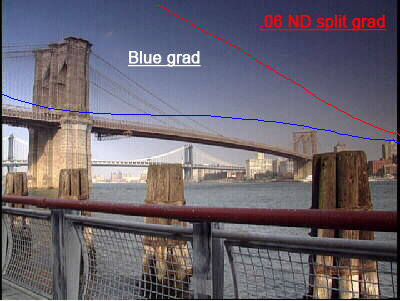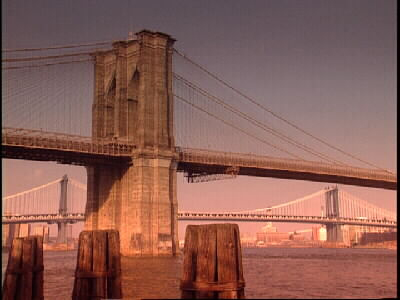Camera Filtration
by Walter Graff

I’ve noticed an absence of discussions on the use of in-camera filters as of late. In fact while everyone is worrying about resolution charts, pixel counts, and all the other nonsense, folks are forgetting that its technique that makes a camera look good, not necessarily how many stops of latitude a chip has.
And everyone seems ot be talking about “doing” effects in post. But as a cinematographer, I want to have as much control and creative input before I edit. Sure today’s edit systems allow you to create some great effects and color correct like million dollar machines but when I get an opportunity to bring a shot into an edit room that looks like I want it to, without electronic processing, that is what I consider one of the elements that makes me a real cinematographer. I’ve always believed that we can not always get everything we want in the field and that post production is the icing on the cake in many instances when you don’t have the ability to make the best shots possible in the field, but when you have the time, filters sure make a difference.
I am not going to tell you what filters to use, or how to use them, rather I am going to simply show you the difference and how filters can make you look like a hero when your tape is put up on a screen in an edit room or on a screen in a projection.
I hope it inspires you to experiment. I will say that there have been many times including these examples where the producer thought much more of me as a shooter because he saw the shots and attributed their beauty to me. That will get me more work and maybe that is a reason to start playing with filtration for you.
In the first set of photos I give you an example of an unfiltered shot, and then a shot with some filtration. How I go about picking what I use really isn’t a plan as much as an attempt with various filters. I carry about 30 filters in a box that I take with me when I shoot with my two-stage matte box .
There is nothing wrong with any of the three pictures below.

The picture above is a shot of the bridge without filtration.

In this shot above I am using two two filters. The first filter (second shot above) is what is called a neutral density split grad. There is a .03, .06 and a .09 version, each higher number twice as dark as the other. It’s basically a filter that looks like a sunglass that goes from very dark on one side and gradually looses it’s color till it’s clear on the opposite side. I placed it so that the sky got darker in the upper right hand corner. The filter is placed at a 60-degree angle in the filter holder so it creates a complimentary angle to the bridge. And I also use a split blue grad filter, which is placed horizontally so the bluer part is on top making the sky read bluer. The photo below outlines the delineations of the filters.

Take a look at another variation in the photo below:

In the picture above I am also using two filters but I am coloring the scene opposite of what it looks like naturally. In this shot I am using the .06 split ND grad again, this time cutting the frame horizontally at about the middle. This darkens the sky. Instead of accentuating the blue sky this time, I am going to accentuate the bridges brick color with an orange split grad that is placed horizontally with the heavier part of the orange color at the bottom of the frame.

Before I finish let me show you how you can use filters for others effects. In this case, it’s not about color but about helping to recover some of the lost dynamic range of a video camera. In the photo below, you can see a tall ship against the backdrop of the sky without a filter.

Notice what happens to the lost dynamic range of the sky when I place a polarizer in the frame as shown below. Or said another way, look how a filter makes me look like a seasoned cinematographer!

Experiment and good luck!
Copyright 2013 by Walter Graff. This article may be circulated and shared as long as the following reference is made: 'This article appears courtesy of Walter Graff- http://www.waltergraff.com'
Please don't hesitate to send me an e-mail if you have any questions or comments please e-mail me at Walter@waltergraff.com